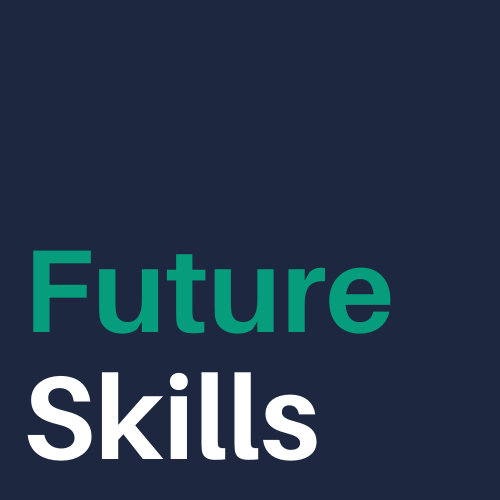Imagine if LinkedIn had a smart technology that guided you through each step of your job search. Imagine if it could accurately match you to jobs based on your background, conduct a skill gap analysis, and recommend courses to make you more qualified for a job. Imagine if it could pair you with a mentor and recommend conversational topics and questions based on mutual interests.
Admittedly, that’s all a bit of a wish list. But my hopes were up when I saw a IBM College tweet about a new service with Watson. For job seekers interested in working at IBM, Watson will help provide “job recommendations that match your skills and interests.” Watson, the do-it-all cognitive technology, is dipping its non-existent toes into career coach waters. As a career coach who’s spent years helping people figure out which jobs are right for them, I had to give Watson a try.
Interacting with Watson starts off easy. Like any good coach, Watson gives you options. It offers the option to explore common questions, answer questions about your experience, or upload your resume to let Watson recommend opportunities for you. I chose the easiest option, the resume upload, because it’s the laziest.
Seconds later, Watson had a list of job recommendations and the initial recommendations were in line with my background. It recommended three job categories at IBM to explore: Marketing, Consulting, and HR. Each category contained 50 jobs. Watson ranked each job by best match, with an icon indicating how well I matched the job opportunity and an info box showing which skills made me a match for the job. Unfortunately, the job opportunities ranged greatly in experience level, education and responsibilities. Oddly internship opportunities ranked high in my results, though I’ve been out of grad school for 8 years and have 10 years of relevant experience. I assumed Watson would only recommend relevant jobs related to my years of experience.
Feeling mildly overwhelmed with 150 matched opportunities, I returned to the beginning to answer questions so Watson could get to know me better. Watons’s questions were related to my work experience, skills, and passion. After answering all of them, Watson recommended a new category to explore: Design and Offer Management. It was a happy discovery. I’m obsessed with UX and immediately found a cool job for a User Experience Designer for Bluemix Garage, their innovation and transformation consultancy which does work with startup communities around the world. Dreamy.
Watson made discovering opportunities relatively seamless because I didn’t have to have to experiment with keywords or job titles to find jobs that may be a good fit, a challenge most job seekers struggle with. Watson also shows which of your skills matched you to a job. Compare that to LinkedIn’s job recommendations which are frequently odd and a mystery, and suddenly Watson seemed quite helpful.
Unfortunately Watson’s helpful magic stalled as I moved from recommendations to interactive chat. As I explored recommended categories, Watson encouraged me: “While you explore these jobs, feel free to ask me any questions you may have about IBM. For example, I want to know about… to learn about company culture, locations and more.”
So I inquired. “Do you have jobs in Portland?” Watson displayed jobs in my category that were tagged “multiple cities” as well as San Francisco and Austin, etc. Was Watson making a hipster connection? I’m still not sure if they have jobs in Portland.
Then I thought of questions a college student might ask. I asked, “what jobs do you have for college graduates?” Watson replied: Based on your resume, it looks like you would be interested in these job categories. You can learn more about these categories or explore opportunities in each category.
I tried to get more specific. “What internships do you have for college graduates?” Watsons repeated the same answer as above. “What is the best way to get a job at IBM?” Same reply, Based on your resume… I asked “How long is the hiring process?” I was directed to a web page on the recruiting process which had little detail. I asked if IBM has MBA-level jobs. The response was “Super, I found opportunities in one job category” The category: Project executive. I tried to clarify, “Are there roles for MBAs in strategy?”
Watson’s response: “Sorry that area is out of my expertise.” Watson apparently hasn’t met IBM’s MBA team.
With daily articles on artificial intelligence and the power of machine learning appearing in my newsfeed regularly, it’s easy to get caught up in the hype of cognitive technology. I made a lot of assumptions as I started to interact with Watson, all driven by hype. I assumed Watson would show me unique opportunities based on my specific questions. I assumed it would offer insights about working at IBM beyond a link to a corporate webpage. I assumed it understood job seekers better. Watson isn’t there yet. To be fair, this service is in its infancy. IBM notes that Watson is learning and can’t answer all the questions.
I remain optimistic though. Artificial intelligence applied to the job search is a potential that is too good to ignore. Some companies already see the future. WayUp just raised $18 million for their platform which uses machine learning to improve job matches between students in students and employers. Looking beyond improved matching, a smart service that helps people navigate the job search – an anxious, joyless, and time consuming process that everyone dislikes – is enticing. There are not enough human career coaches to assist people through the coming workforce disruption. People need guidance as they think through retraining options and upskilling. A smarter Watson could serve as a virtual career coach and support system to help people navigate an increasingly ambiguous future of work.
I look forward to that day.












 I have zero connection to digital arts or animation.
I have zero connection to digital arts or animation.